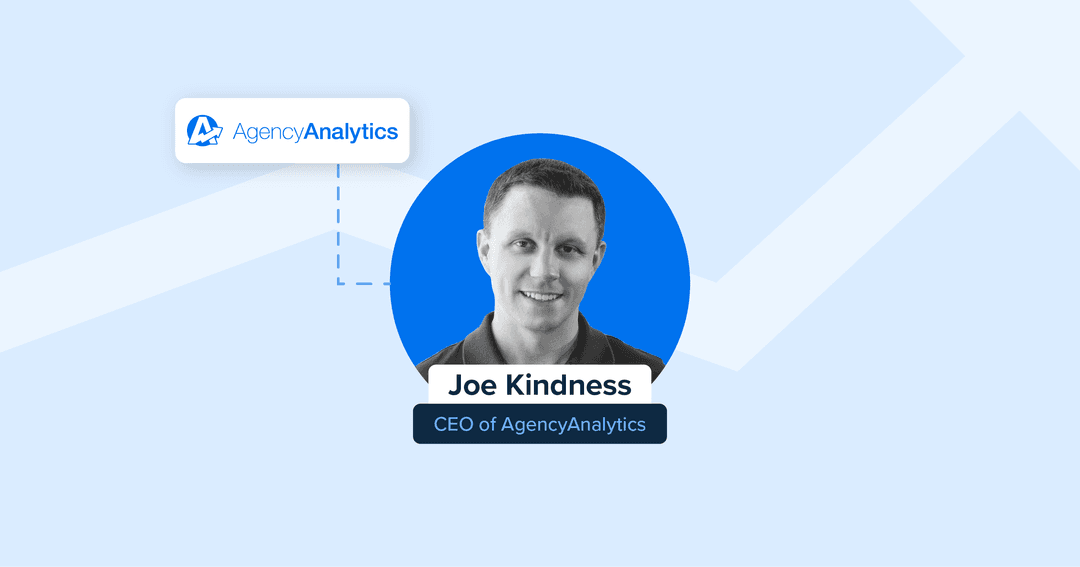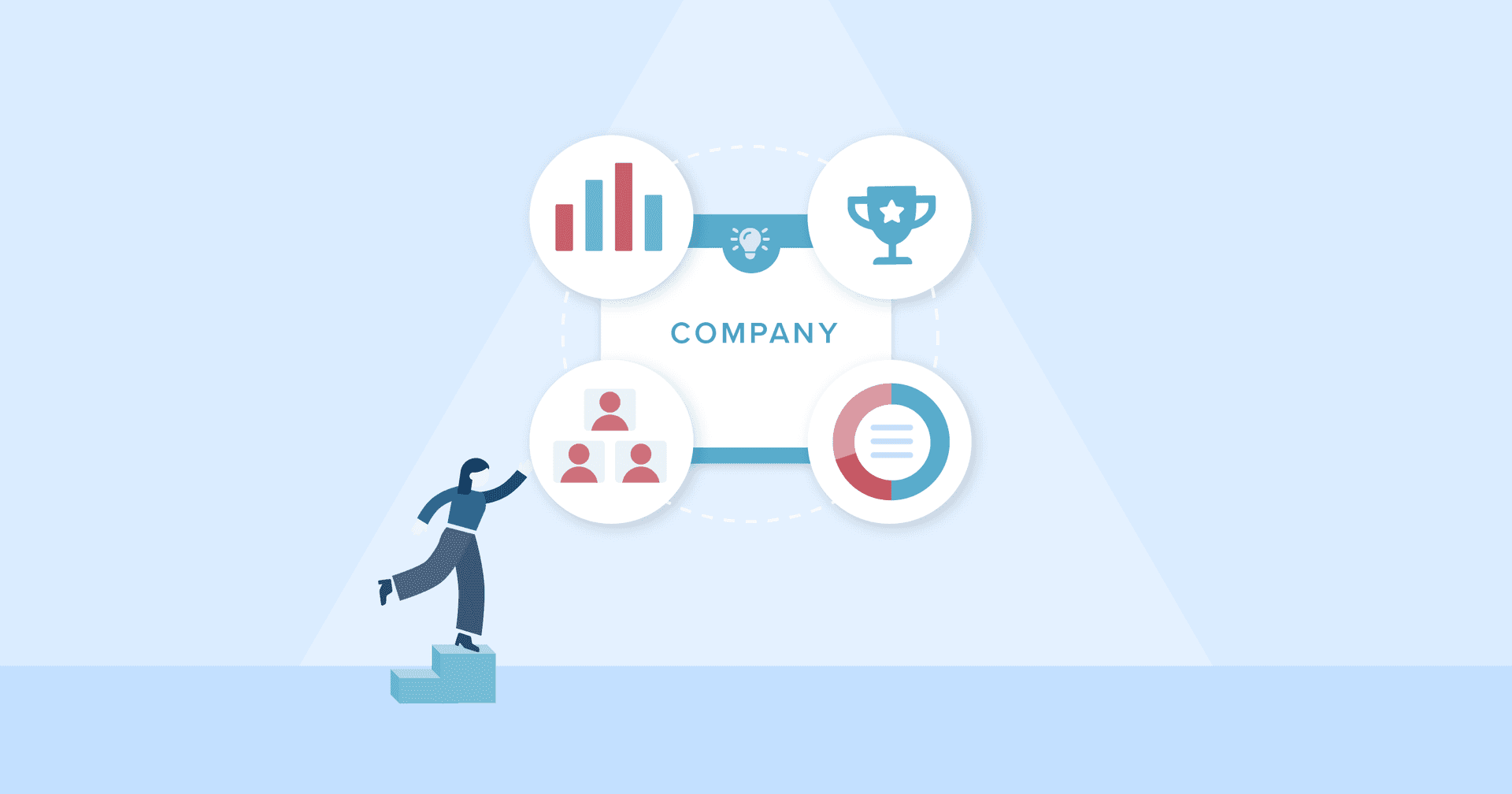Table of Contents
QUICK SUMMARY:
Bootstrapping a business takes patience, resourcefulness, and a clear vision. AgencyAnalytics CEO Joe Kindness shares his insights on the challenges and benefits of self-funding, from managing cash flow to scaling sustainably. If you're considering bootstrapping your own agency, Joe offers practical tips and lessons learned to help you grow, stay focused, and thrive at every stage of your journey.
When we started AgencyAnalytics, bootstrapping wasn’t so much a choice as it was our reality.
Fourteen years ago, the idea of hunting down venture capital firms didn’t even cross our minds. My co-founders and I were developers with a simple business plan: Build something valuable for the industry. Bootstrapping let us focus squarely on our goals without distractions. We were able to move at our own pace, grow sustainably, and keep control of our company vision.
Now, looking back, I realize how many advantages running a bootstrapped company gave us.
It’s allowed us to stay focused on building value for our customers and cultivate a strong company culture. I’ve seen firsthand how bootstrapping demands discipline and ingenuity, but the trade-offs have been more than worth it.
Today, I’d like to share what I’ve learned about bootstrapping over the years—from the sacrifices and risks to the tips I wish I’d known in the early days.
If you’re thinking about bootstrapping your own business, especially in the agency world, I hope these insights help you make the most of it.
Why We Chose to Bootstrap AgencyAnalytics
Bootstrapping AgencyAnalytics was less of a deliberate decision and more of a natural path for us back in 2010.
There was a simplicity to it—either we’d build something our customers valued and wanted to pay for, or we’d pack it up and move on to something else. That mindset kept things clear-cut and focused: Build a valuable product, one that solves real problems for our customers, and let the results speak for themselves.

AgencyAnalytics’ founding partners (from left): Joe Kindness, Blake Acheson, and Jesse Smith.
Over time, bootstrapping became more than just a funding approach; it became a core part of our identity.
Here are some additional reasons why staying bootstrapped made sense for us:
Validation Through Customer Demand
We wanted our validation to come from customers, not outside investors. For us, it was about knowing we’d created something valuable because people were willing to pay for it, not because we’d convinced a venture firm to write a check.
Focusing on customer-driven growth kept us grounded and customer-centric. When clients invested in us, we knew we were solving real needs.
Freedom From Distractions
Staying bootstrapped allowed us to focus purely on product and customer satisfaction without the constant pressure to show revenue growth at any cost.
Early on, we prioritized building something that worked for our customers over profit-driven milestones. Being profitable and lean afforded us this luxury, and it helped us ignore unnecessary distractions.
Control Over Our Company’s Future
By not bringing in outside funding, we retained full control over our vision for the company and our culture.
We had no external board pushing for rapid growth or steering the ship. Instead, we grew organically, making decisions that aligned with our values and what we believed would best serve our clients.
Scaling on Our Terms
When we eventually reached a point where scaling became necessary—around 2020, a decade after we started—we had a “nest egg” from years of profits to fund our own growth. We were at nearly $6M in ARR at that time. By the end of 2020, we had grown from a lean 10-person team to nearly 50 people and had reached $8.5M in ARR without compromise.
It snowballed from there: By the end of the following year, we had 70 team members (7X the number of employees at the beginning of 2020) and $12M in ARR (double our 2020 starting ARR).
Bootstrapping hasn’t always been easy, but it’s given us many benefits that go beyond financial independence. It’s allowed us to build a strong, customer-centered company culture where everyone is motivated by creating something meaningful rather than pleasing an outside investor.
The Main Challenges of Bootstrapping a Business
Bootstrapping is a rewarding path, but it’s also filled with its fair share of challenges.
Without external funding, you’re relying on your only existing resources—your initial capital being your personal savings—and that forces you to make every decision count. For AgencyAnalytics, it meant staying lean, making tough calls on priorities, and focusing relentlessly on cash flow.
Staying Lean in the Early Stages
In the first year, Blake, Jesse, and I didn’t take a salary, living off our own savings and investments to make it through. We learned early on to cut costs wherever possible to keep operating expenses within reason. Instead of paying for ads, we focused on SEO and other organic methods. Instead of hiring a team, we handled everything ourselves.
Those lean, DIY days weren’t easy, but they taught us the value of resourcefulness. Each dollar of our own money had to be accounted for to avoid personal debt, forcing us to be strategic in ways that paid off long-term.
Managing “Shiny Object Syndrome”
In the startup world, it’s easy to get distracted by exciting new ideas or opportunities. But for a bootstrapped business, chasing every shiny object isn’t feasible. For us, it came down to focusing capital expenditures on what was most valuable to our customers and ignoring the rest.
We said no to a lot of potential projects and expansions that didn’t align with our core offering. It kept us on track and allowed us to refine the product in a way that genuinely served our customers.
Resisting External Offers
As we grew, we had plenty of opportunities to bring in venture capital. At times, we even received offers to buy the company outright. These investment proposals were tempting, but each time, we decided to stay focused on the long game.
Turning down funding or a sizeable investment proposal wasn’t always easy—especially as these offers grew in size—but we reminded ourselves of our goals. Each time we said no, we felt more committed to building a sustainable business on our own terms.
Maintaining Focus on Key Metrics
Bootstrapping required us to become deeply familiar with our key performance metrics—tracking profitability, cash flow, and business growth at every stage.
One metric that helped us measure our progress was the “Rule of 40,” where growth rate plus profit margin should ideally add up to at least 40%. This guideline kept us disciplined and profitable. Even as we expanded, we made sure our hiring and scaling efforts aligned with these metrics so we wouldn’t stretch ourselves too thin.
Scaling With Limited Resources
When we finally hit full-on scaling mode in 2020, we didn’t have the luxury of VC funding to “pour fuel on the fire.” We had to scale responsibly and make sure each hire and investment was fully justified.
We took a slower, measured approach to hiring and onboarding team members gradually to ensure the right culture fit and avoid overwhelming our existing team. It was a strategic approach that allowed us to grow while maintaining our standards for quality and profitability.
Bootstrapping taught us a lot about resilience and discipline. It demands that you put in the work and stay focused on your mission, even when tempting shortcuts or flashy opportunities arise.
If you’re able to weather those challenges, bootstrapping will create a sustainable and deeply fulfilling business.
How to Bootstrap a Business: 12 Critical Tips for Success
Bootstrapping a business is all about resourcefulness, patience, and focusing on sustainable growth. After 14 years of building AgencyAnalytics without outside funding, here are my top tips for founders looking to bootstrap their own ventures.
1. Start Lean With a Minimum Viable Product (MVP)
Begin with a minimum viable product (MVP) that captures the essence of your core business idea without the bells and whistles. This lets you keep costs down and get direct customer feedback early on. It’s also a great way to test your value proposition—proving that even a simple version of your product addresses real customer pain points.
🥾Tip: Identify one core problem for customers and work to solve it well before adding anything else.
2. Set a Hard Limit on Self-Funding to Avoid Financial Risk
It’s easy to overcommit personal finances when you’re building something you’re passionate about. But when bootstrapping, protecting your own financial health is as important as nurturing the business.
🥾Tip: Create a firm personal budget for the business, and regularly check in with yourself to make sure you’re sticking to it.
3. Keep Cash Flow Stable, Not Just Positive
For a bootstrapped business, positive cash flow isn’t enough—it has to be consistent to sustain you through lean months. Instead of only tracking profit, set up a routine for monitoring cash flow every week. This will help you catch potential issues early and ensure the business remains stable.
🥾Tip: Forecast cash flow for several months ahead to identify any potential crunch points early.
4. Handle Customer Support Yourself
One of the biggest advantages of bootstrapping is staying directly connected to your customers. We wouldn’t have been able to consistently grow revenue or achieve product-market fit without being closely attuned to what was working for our customers—and what wasn’t.
Handling customer support yourself in the early days allows you to gather these insights firsthand. Rather than relying on secondhand reports or expensive market research, you can use these direct conversations to refine your product, solve real problems, and build loyalty.
🥾Tip: Regularly engage with customers to understand their pain points and successes. Use this feedback to fix issues and evolve your product or service to drive long-term growth.
5. Leverage Your Personal Network
Your network is an important asset in bootstrapping, but it’s better to build relationships with a few strategic contacts than to focus on quantity. Identify industry peers, mentors, other founders, or even friends and family members who understand the bootstrapping approach and can provide useful guidance, partnerships, or leads.
🥾Tip: Prioritize quality over quantity; a few trusted contacts can be more helpful than a large network.
6. Maintain Open Communication With Your Co-Founders
When you’re building a business with co-founders, your relationship is one of the most important assets you have. Clear, honest, and open communication helps you stay aligned on goals and tackle challenges when they arise. Two aligned minds can solve problems faster and help you make decisions with confidence.
🥾 Tip: Schedule regular check-ins with your co-founder to discuss challenges, goals, and any concerns.
7. Invest Sweat Equity Instead of Cash
Taking on multiple roles yourself saves money in the early days and builds a hands-on understanding of your business. However, as soon as you can afford to, begin transitioning key tasks to others so you can focus on high-impact areas like product development or customer strategy.
🥾Tip: Identify one or two tasks you’re most comfortable delegating as soon as resources allow, even if it’s just on a part-time basis.
8. Build a Core Leadership Team When You’re Ready
Speaking of delegating tasks, a strong leadership team will eventually become essential to scale effectively and sustainably. Focus on bringing in people who share your vision and can take ownership of their roles. Having trusted leaders in place allows you to work on the business rather than in it, freeing up time to pursue strategic goals.
🥾Tip: Start by delegating just one key function—like operations or marketing—to a trusted team member who aligns with your values.
9. Avoid Burnout With Realistic Expectations
Bootstrapping often demands long hours, but avoid letting that become your standard. Setting boundaries for work hours and personal time helps prevent burnout and keeps you performing at your best.
Remember, sustainable growth means looking after yourself as much as your business. As I mentioned, surrounding yourself with a leadership team to handle key tasks means you can allocate your time more effectively.
🥾Tip: Build short breaks into your schedule, especially during high-stress times, and celebrate small wins to keep morale high.
10. Retain Complete Control by Self-Funding
Bootstrapping gives you full control, and with that comes the responsibility to stay focused on your vision. Remind yourself regularly of your long-term goals to keep from drifting off course. Revisit your vision statement every few months, and adjust it if necessary to ensure the business is aligned with your initial purpose.
🥾Tip: Schedule a “vision check” every quarter to evaluate progress and make adjustments that stay true to your mission.
11. Focus on Sustainable, Long-Term Growth
Unlike rapid VC-fueled scaling, bootstrapped companies benefit from steady, sustainable growth. Plan expansions carefully, whether it’s a product update or a new hire, and pace growth to match your revenue rather than racing to increase headcount or launch new features.
🥾Tip: Before any major growth initiative, assess if it’s financially sustainable and strategically beneficial in the long run.
12. Embody Company Culture as You Add People
Culture starts with the founders. The behaviors, values, and communication style you demonstrate as a founder set the tone for the entire organization. As you add people to your team, they’ll naturally look to you for cues on how to work, collaborate, and approach challenges.
🥾 Tip: Define the culture you want early on and manifest those values in your actions.
Building a Business on Your Own Terms
Bootstrapping isn’t the easiest road to travel, but it’s a business model filled with valuable lessons and rewarding milestones. For us at AgencyAnalytics, choosing to bootstrap shaped how we operated, grew, and connected with our customers. The decision to use our own resources and rely on customer-driven growth gave us a sense of ownership and control that’s hard to replicate with outside funding.
When you bootstrap your startup or agency, every decision matters. From managing cash flow to building customer relationships, you’re operating with a lean mindset that forces you to be resourceful and resilient at different stages of your agency’s lifecycle.
It’s been 14 years since we started AgencyAnalytics, and we’ve grown the company to include more than 140 employees. I can say without hesitation that the focus and discipline we developed in those early days still guide us today.

To those considering bootstrapping, my advice is simple:
Embrace the journey.
Use your challenges as opportunities to learn and grow.
Keep your vision at the forefront.
The process might require more patience and persistence, but the rewards—full control over your business, a close connection with your customers and team members, and a sustainable growth path—are worth every sacrifice.

Written by
Joe is the co-founder and CEO of AgencyAnalytics, a marketing reporting platform used by more than 7,000 agencies. With experience creating multiple businesses, he thrives on tackling the challenges of sustainable growth and innovation.
Read more posts by Joe KindnessSee how 7,000+ marketing agencies help clients win
Free 14-day trial. No credit card required.






